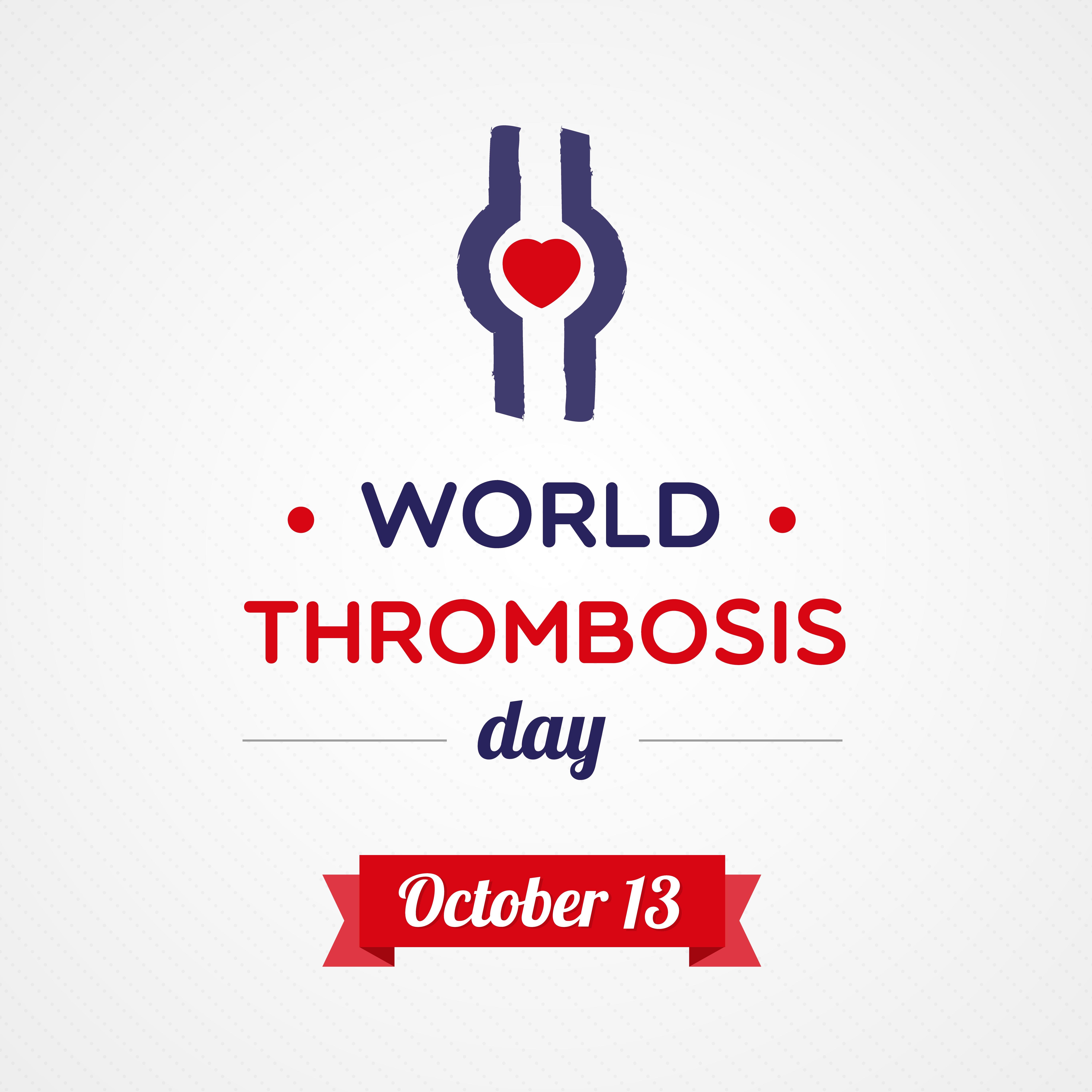October 13th is the World Thrombosis Day. For many of you this day is not a special one as most of you might not be aware of what thrombosis is. As a matter of fact, you would like to know more about this condition since 1 in 4 deaths worldwide are related to thrombosis. Moreover, if you have diabetes or any diabetes side effects, you should read this!
10 Facts on thrombosis
- The word thrombus refers to a blood clot.
- Thrombosis is a process of blood clotting in the blood vessel. This can happen in the arteries or veins.
- Formation of blood clots in arteries or veins leads to slowing down of blood flow as these clots tend to obstruct blood flow.
- Blood clots in blood vessels can lead to life-threatening illnesses and is a major cause of disability among many people.
- As blood clots obstruct blood flow, it can lead to deprivation of oxygen to tissues and organs causing serious damage
- Thrombosis is classified as per the vessel it is present in and the organ it damages
- There is venous thrombosis and arterial thrombosis
- A major cause of mortality in thrombosis comes from venous thromboembolism
- In deep vein thrombosis, blood clots formed in the deep veins of the legs tend to travel and get lodged in the lungs leading to a life-threatening condition called pulmonary embolism
- Blood clots can occur to people of all ages irrespective of gender or other factors
Why diabetes increases the risk of blood clotting?
Complications of diabetes are known to cause numerous diseases like heart problems, coronary heart disease, retinopathy, and diabetic neuropathy. This is because in diabetes people have high blood sugar levels for prolonged periods of time. This high blood sugar levels lead to damage of blood vessels, and nerves. With this damage it leads to numerous diseases.
Diabetes causes heart problems like atherosclerosis. In atherosclerosis, there is buildup of plaque which consists of cholesterol, calcium, and cellular debris. These plaques not only obstruct blood flow, they also cause dangerous blood clots that can cause heart attack.
Complications of blood clotting in diabetes
Some statistics reveal that around 80% of people with diabetes have fatal consequences due to the formation of blood clots. Excessive blood clotting in diabetes leads to:
- Heart attack
- Stroke
High blood sugar levels cause abnormalities in the process of coagulation. High glucose levels not only leads to increased stimulation to form blood clots, the ability of these blood clots to dissolve is also reduced.
Risk factors for formation of thrombosis
- Smoking
- Alcohol consumption
- Obesity
- Prolonged periods of sedentary lifestyle or bed rest
- Diabetes
- Atrial fibrillation
- Peripheral artery disease
- Atherosclerosis
- Cancer
- Hormone replacement therapy
Venous thromboembolism in diabetes
Complications of diabetes increase the risk of deep vein thrombosis, and venous thromboembolism enormously, especially people with diabetes and hypertension, and diabetes with high cholesterol levels.
People with diabetes are also at an increased risk of deep vein thrombosis, and pulmonary embolism (a life-threatening condition). They are also at a higher risk of infections, heart failure, chronic kidney disease, and cerebrovascular diseases.
People with diabetes and venous thromboembolism come up with symptoms like:
- Pain/tenderness in the legs
- Swelling in legs
- Shortness of breath
- Fast heartbeat
- Chest pain
Some people might go into pulmonary embolism without exhibiting any symptoms of thrombosis.
Symptoms of pulmonary embolism
- Sudden, unexplained shortness of breath
- Chest pain
- Unconsciousness
- Rapid heart rate
- Rapid breathing
Treatment options of thrombosis include anticoagulant medications, compression stockings, and thrombolytic therapy. Since the risk of fatality is high in thrombosis, preventing this condition is very important for people with diabetes.
How to prevent thrombosis
- Work towards diabetes control
- Reach target sugar levels and HbA1c
- Maintain normal cholesterol levels
- Maintain blood pressure
- Do not lead a sedentary lifestyle
- Get at least 150 minutes of exercise per week
- Do not sit still for prolonged hours (while flying)
- Maintain a diabetic diet
- If you have irregular heartbeat, get a complete heart risk assessment
- Get regular screening for diabetes complications
- Get a lipid profile test as prescribed by your diabetes doctor
Since men are at a higher risk of deep vein thrombosis, men above 45 years of age (with diabetes), are at a higher risk of pulmonary embolism. That is why men with diabetes should:
- Quit smoking
- Maintain a healthy body mass index
- Control hypertension
- Avoid severe dehydration











